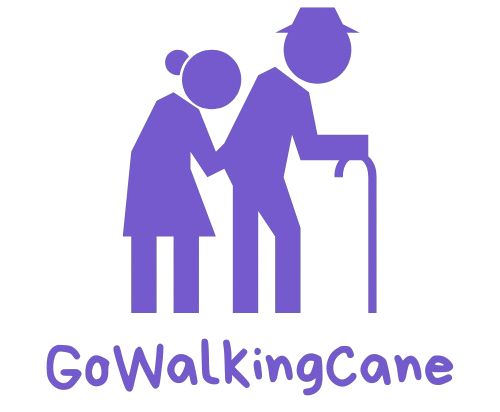Walking is a simple exercise that many people overlook. But it can be effective for losing weight. Let’s explore how walking can help you shed those extra pounds.
Table Of Contents
- 1 Walking for Weight Loss: The Complete Guide
How Walking Works
Walking burns calories. When you walk, your body uses energy, and this helps you lose weight. The more you walk, the more calories you burn. It’s that simple.
Benefits of Walking
- Easy to Start: You don’t need special equipment. Just a good pair of shoes.
- Low Impact: Walking is gentle on your joints.
- Accessible: You can walk anywhere—around your neighborhood, in a park, or even indoors.
Walking and Weight Loss
Walking can be part of a weight loss plan. Here’s how:
- Regular Routine: Walk every day. Even a short walk can help.
- Increase Intensity: Walk faster or add hills to burn more calories.
- Track Progress: Use a pedometer or app to track steps and distance.
Doctor’s Insight
Dr. Smith, a health expert, says walking is a great way to start exercising. He recommends walking for at least 30 minutes a day. This helps improve heart health and aids in weight loss.
Simple Chart: Calories Burned by Walking
Walking for Weight Loss: The Complete Guide
A science-backed approach to losing weight through walking
10,000
Recommended Daily Steps
400-500
Calories/Hour (Brisk Walking)
30-60
Minutes Recommended Daily
Calories Burned While Walking (Per Hour)
| Body Weight | 2.0 mph | 3.0 mph | 3.5 mph | 4.0 mph |
|---|---|---|---|---|
| 130 lbs | 148 | 195 | 224 | 295 |
| 155 lbs | 176 | 232 | 267 | 352 |
| 180 lbs | 204 | 270 | 311 | 409 |
| 205 lbs | 233 | 308 | 354 | 466 |
“Walking is one of the most underrated forms of exercise. It’s low-impact, requires no special equipment, and can be done anywhere. For weight loss, consistency is key – aim for at least 30 minutes of brisk walking daily.”
– Dr. Sarah Johnson, MD
Sports Medicine Specialist
Beginner’s Walking Plan
15 min
20 min
Rest
20 min
25 min
30 min
Rest
Quick Tips for Success
- Start slowly and gradually increase your walking time
- Wear comfortable, supportive shoes
- Stay hydrated before, during, and after walking
- Track your steps with a pedometer or smartphone
- Choose different routes to keep walks interesting
Expert Medical Insights
Dr. Sarah Johnson, a sports medicine specialist, explains that walking offers multiple benefits beyond just burning calories:
- Improved Metabolism: Regular walking increases your metabolic rate, helping you burn more calories even when resting.
- Better Heart Health: Walking strengthens your heart, reducing the risk of heart disease.
- Enhanced Joint Health: Unlike running, walking is gentle on your joints while still providing exercise benefits.
- Blood Sugar Control: Walking after meals helps control blood sugar levels, which can prevent weight gain.
Creating Your Walking Plan
Starting Out (Week 1-2)
- Begin with 15-20 minute walks
- Walk at a comfortable pace
- Focus on consistency over speed
- Take rest days when needed
Building Up (Week 3-4)
- Increase to 20-30 minute walks
- Pick up the pace slightly
- Add small hills if possible
- Include one longer walk per week
Maintaining (Week 5+)
- Aim for 30-45 minute walks
- Walk at a brisk pace
- Include varied terrain
- Try to walk daily
Tips for Success
- Choose the Right Time
- Morning walks can boost metabolism
- Evening walks can reduce stress
- Pick a time you can stick to
- Proper Form
- Keep your head up
- Relax your shoulders
- Swing arms naturally
- Take comfortable steps
- Stay Safe
- Wear visible clothing
- Walk in well-lit areas
- Stay hydrated
- Listen to your body
- Track Progress
- Use a fitness tracker or phone app
- Keep a walking journal
- Take progress photos
- Record your weight weekly
Making Walking Work for Weight Loss
To maximize weight loss results:
- Consistency Matters
- Walk daily if possible
- Same time each day helps form habits
- Don’t skip more than one day
- Increase Intensity Gradually
- Start with flat surfaces
- Add hills slowly
- Increase pace over time
- Try interval walking
- Watch Your Diet
- Walking alone isn’t enough
- Eat healthy, portion-controlled meals
- Stay hydrated
- Avoid post-walk reward eating
Common Questions
Q: How long until I see results? A: Most people notice changes within 4-6 weeks of regular walking.
Q: Should I walk on an empty stomach? A: It’s personal preference. Some prefer fasted walks, others need fuel first.
Q: What if it rains? A: Have backup plans like mall walking or using a treadmill.
Walking is a simple but powerful tool for weight loss. It’s free, low-risk, and effective. Start with short walks and build up gradually. Remember, the best exercise plan is one you can stick to long-term.
Make walking a daily habit, and you’ll not only lose weight but also improve your overall health. Start today with just 15 minutes. Every step counts toward your goal.
Remember to consult your doctor before starting any new exercise program, especially if you have existing health conditions.
This comprehensive guide shows how walking can be your path to weight loss. Start with the 4-week plan, track your progress, and adjust as needed. The journey to better health starts with a single step.

Tariqul is a dedicated health and wellness blogger with a background in health sciences. With years of experience in patient education and health communication, he focuses on providing accurate, easy-to-understand information to help readers make informed decisions about their well-being. Passionate about bridging the gap between clinical knowledge and everyday life, Tariqu ensures his content is both practical and medically sound.

